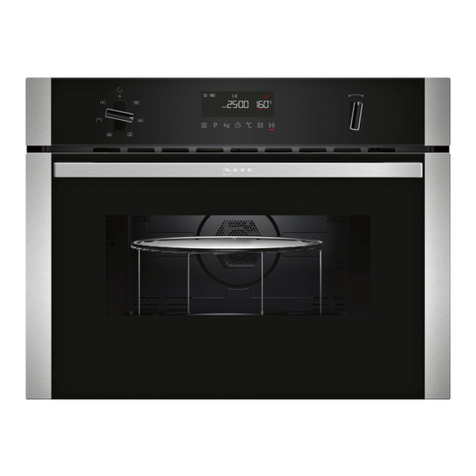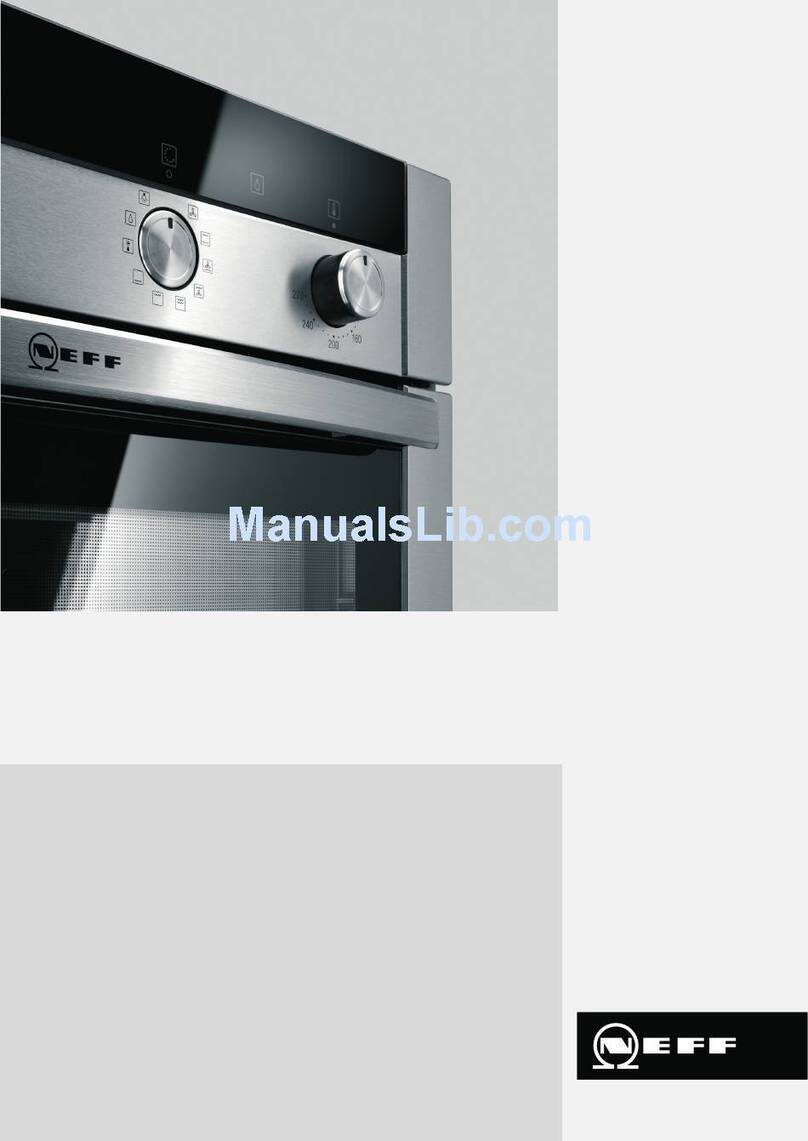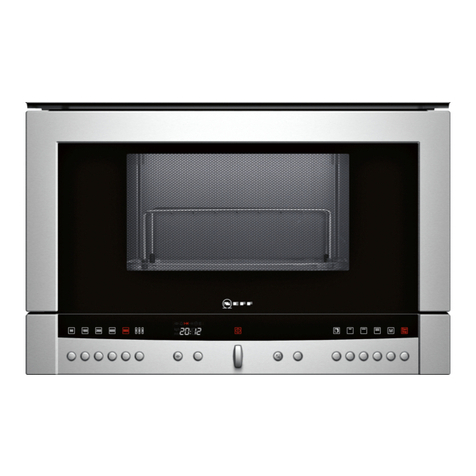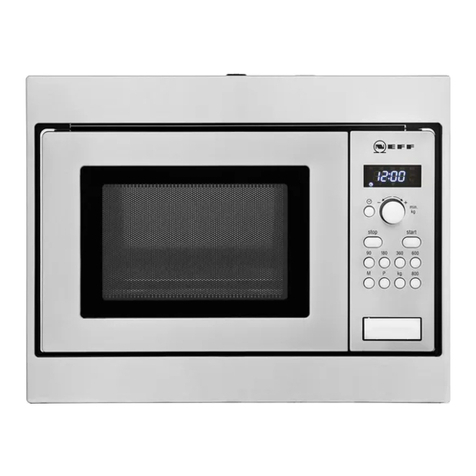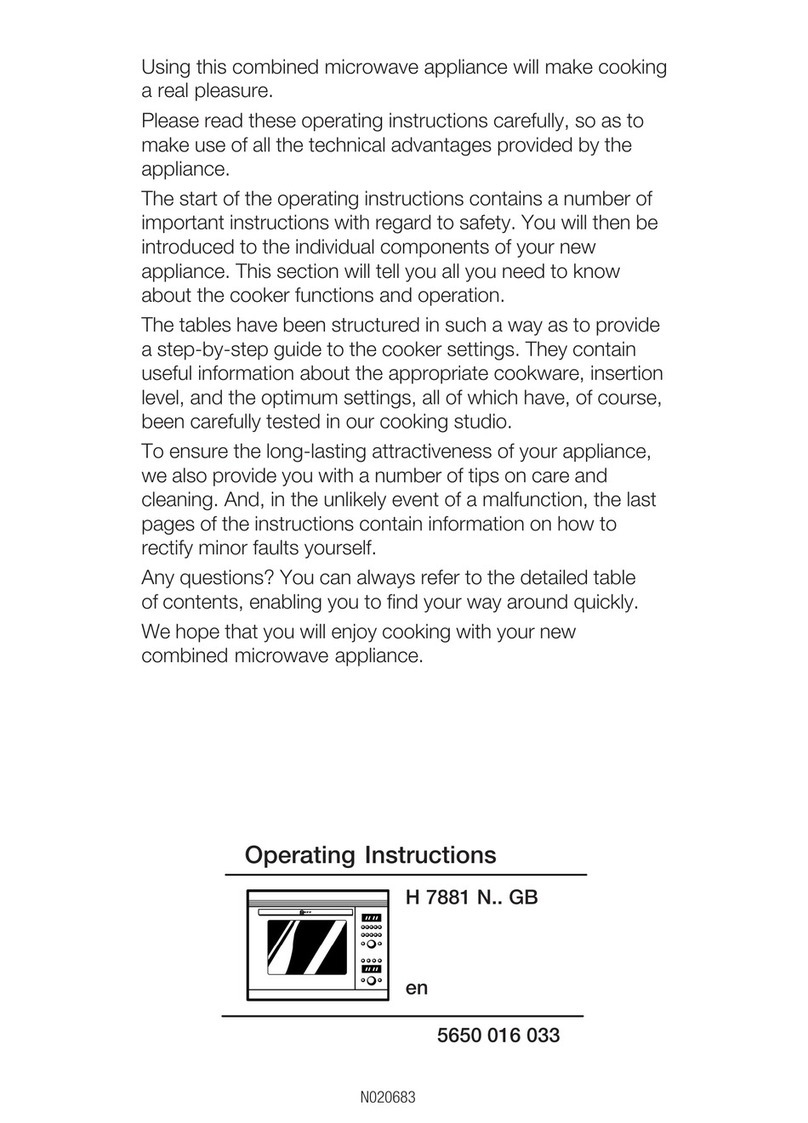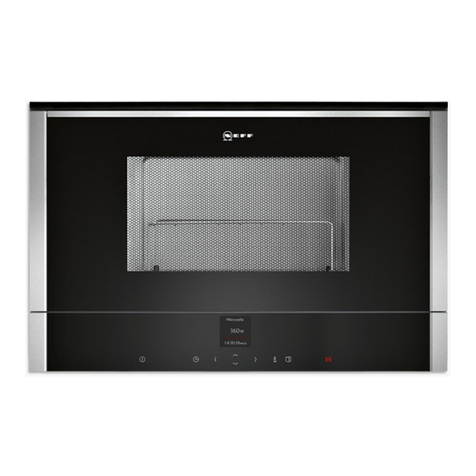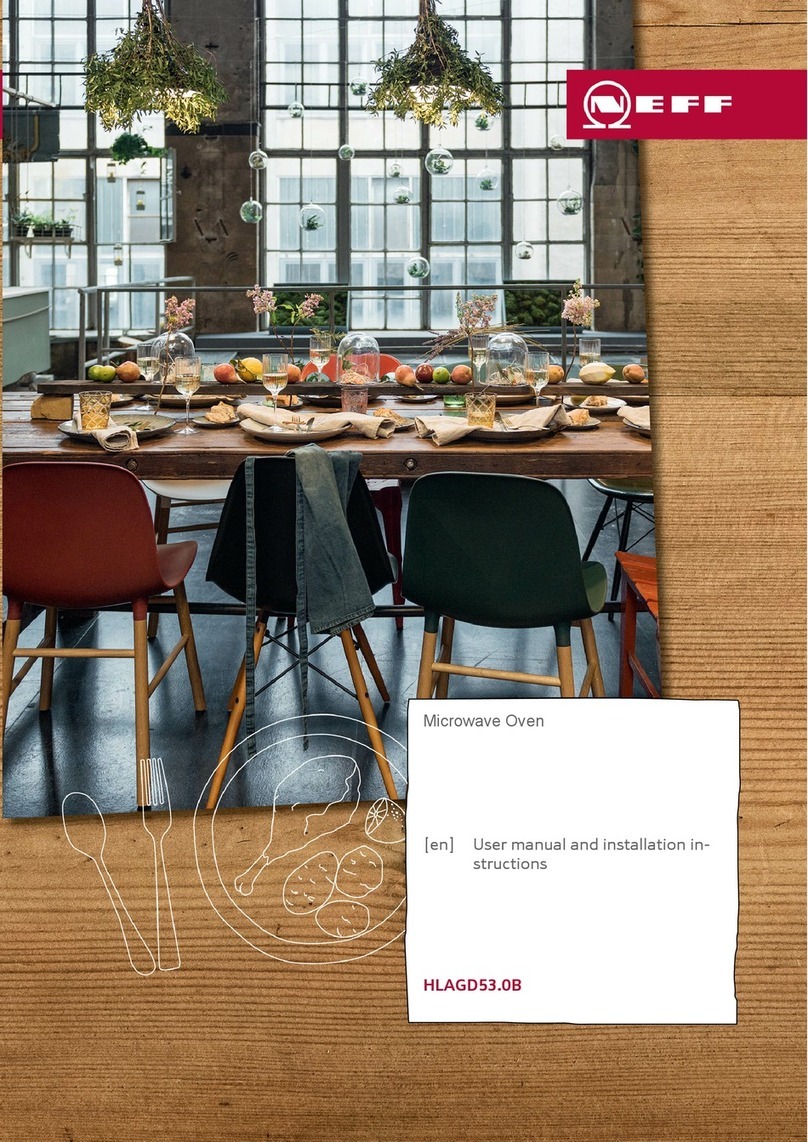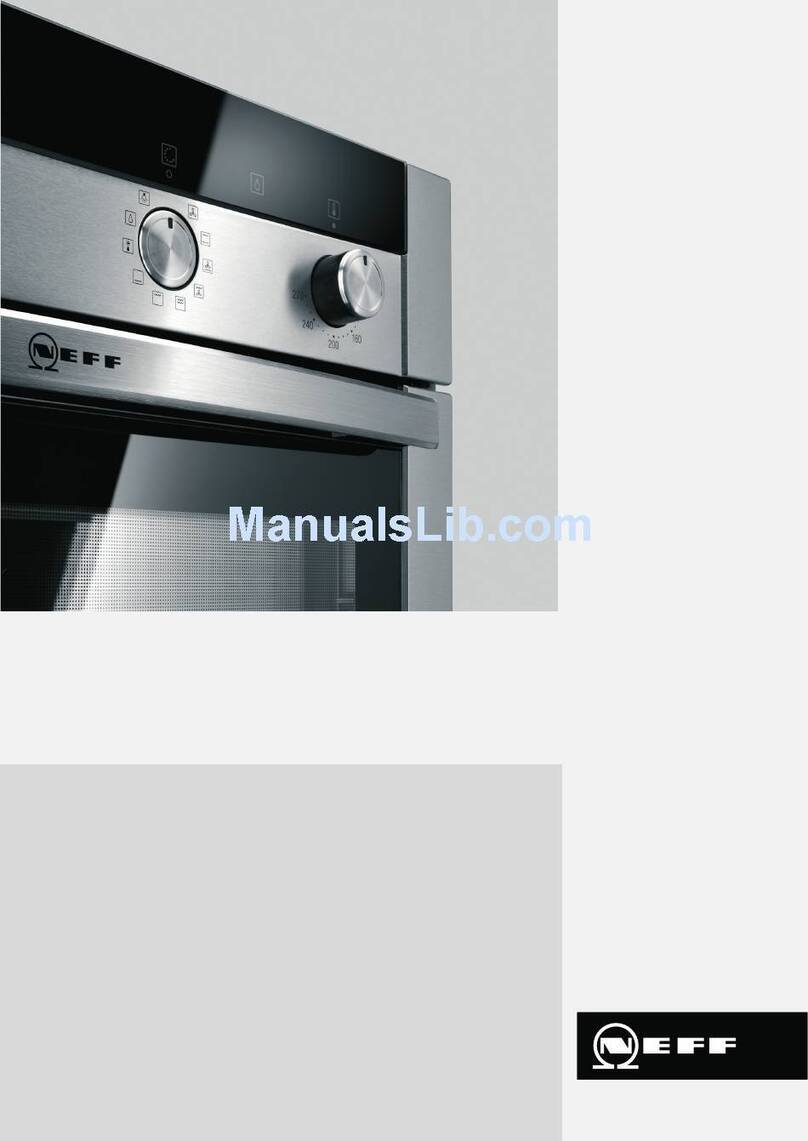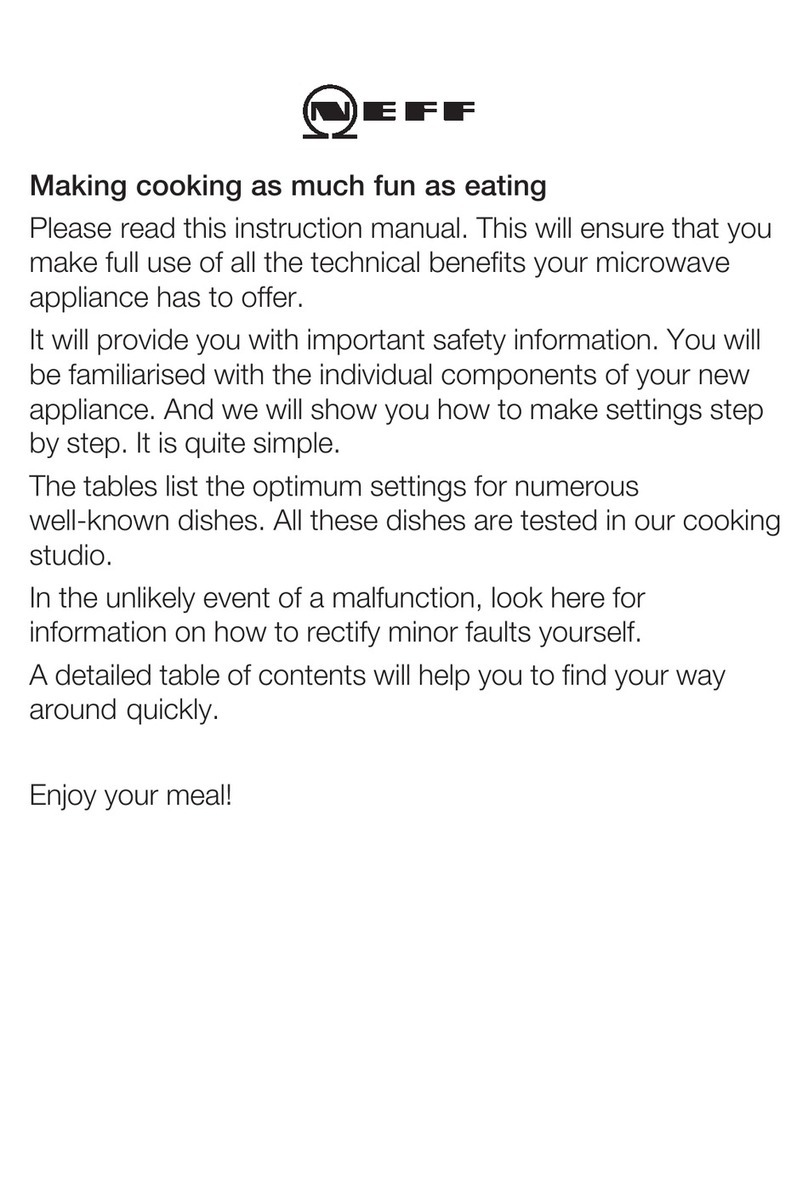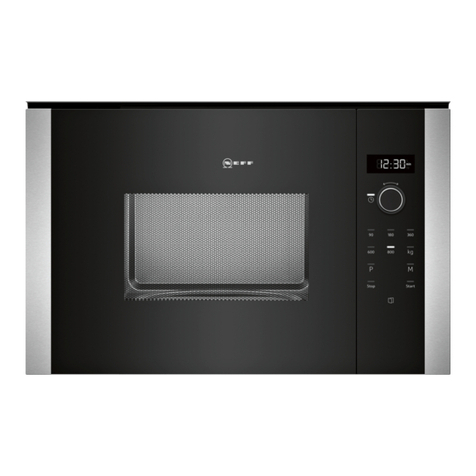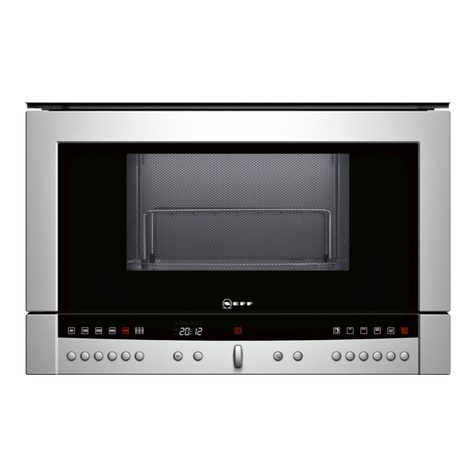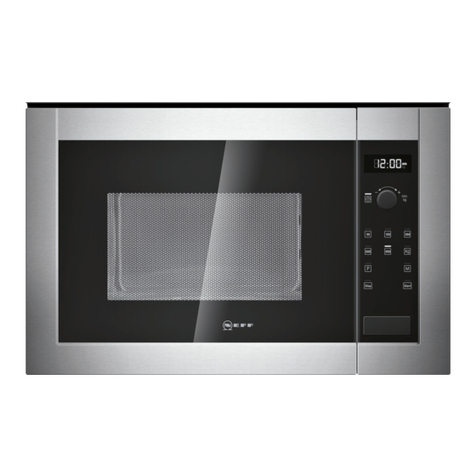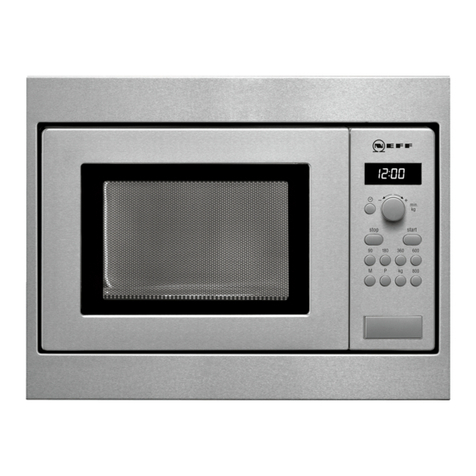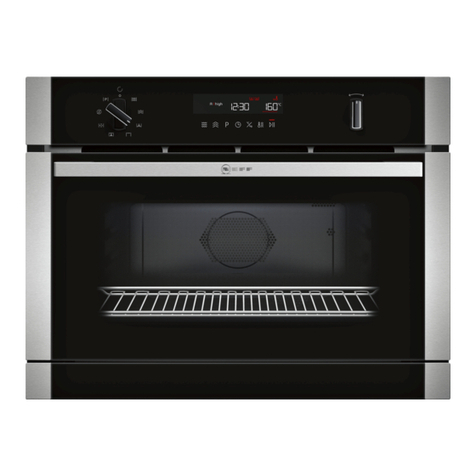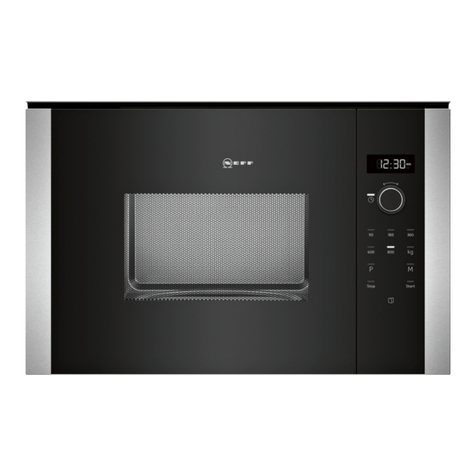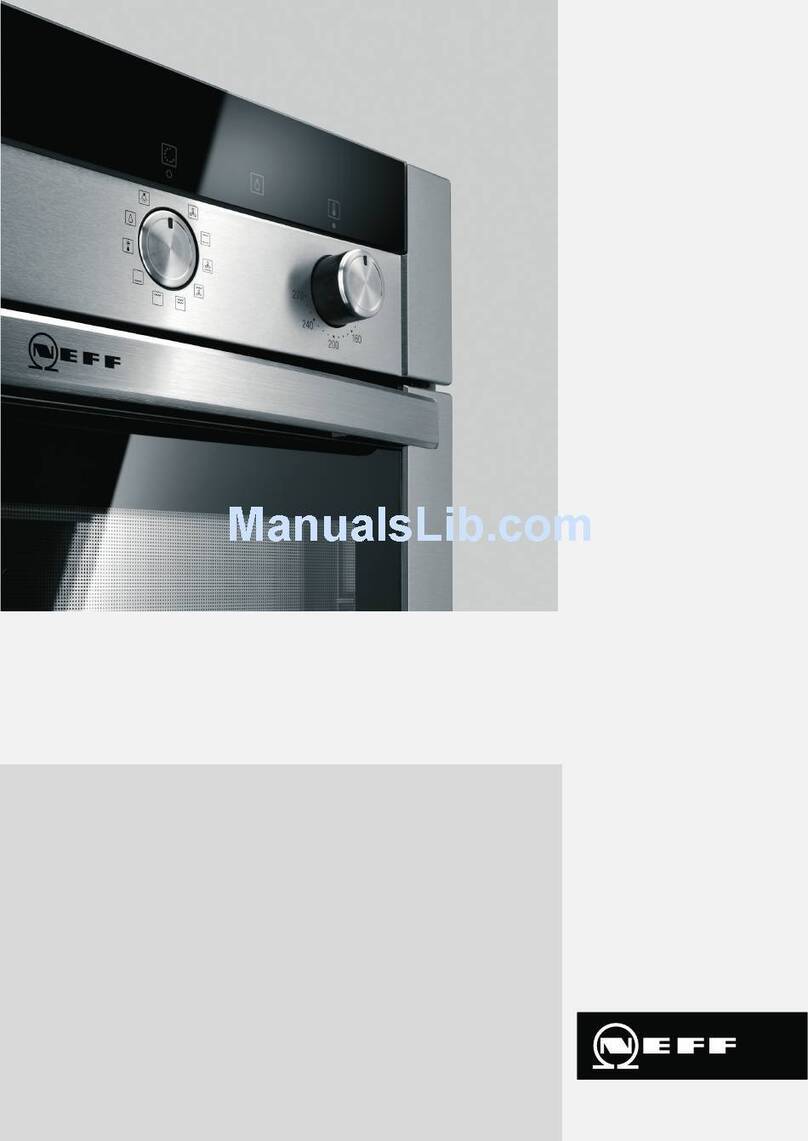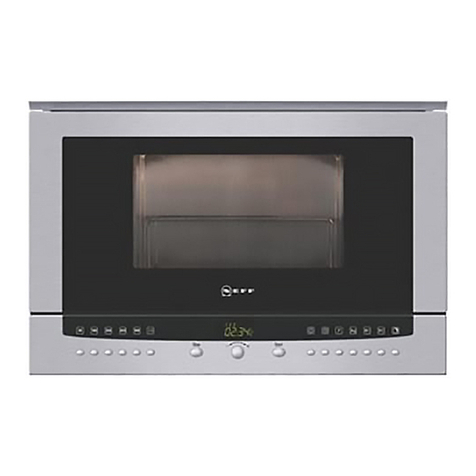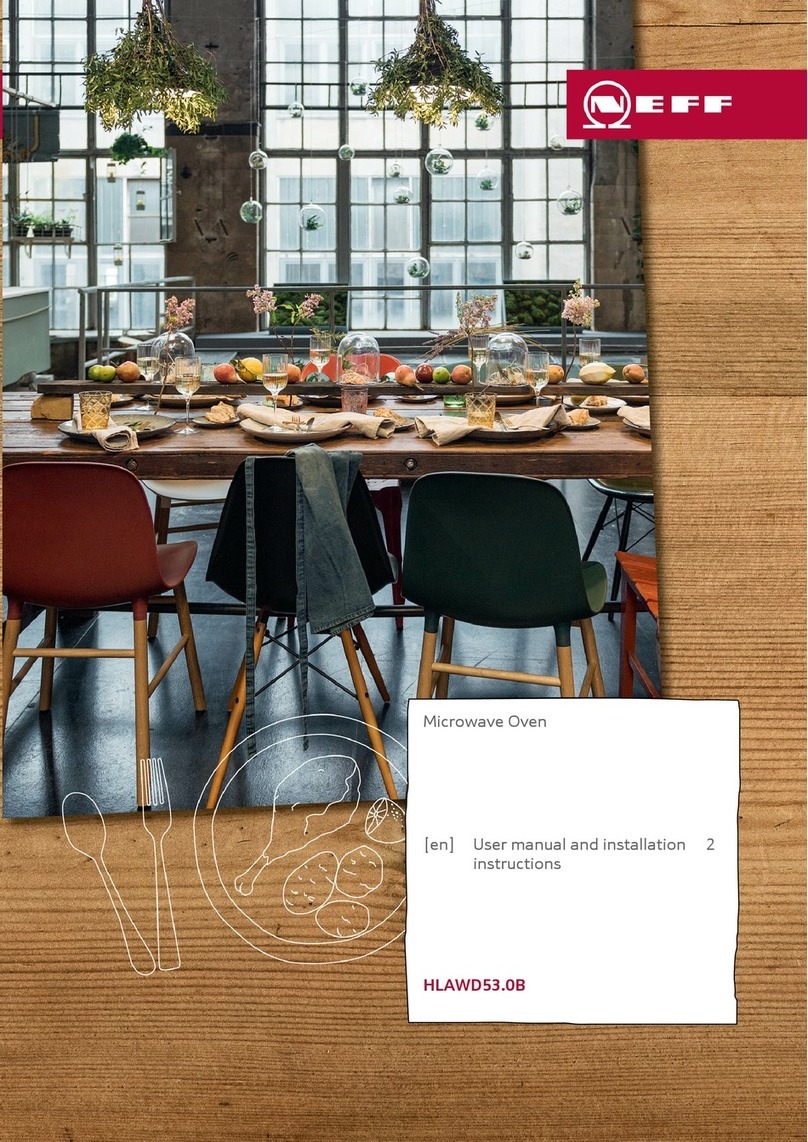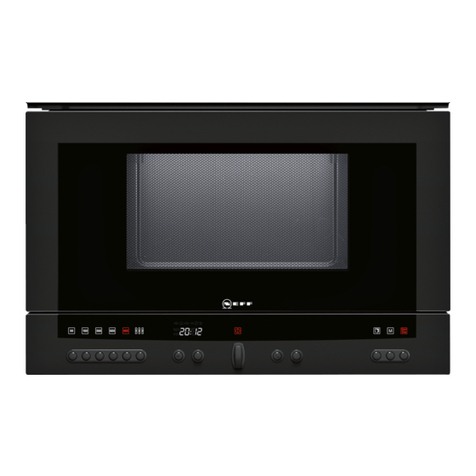
en Safety
4
1.5 Microwave
CAREFULLY READ THE IMPORTANT SAFETY
INSTRUCTIONS AND KEEP THEM SAFE FOR
FUTURE USE
WARNING‒Risk of fire!
Using the appliance for anything other than its
intended purpose is dangerous and may
cause damage. For example, heated slippers
and pillows filled with grain or cereal may
catch fire, even several hours later.
▶Never dry food or clothing with the appli-
ance.
▶Never heat up slippers, pillows filled with
grain or cereal, sponges, damp cleaning
cloths or similar with the appliance.
▶The appliance must only be used to pre-
pare food and drink.
Food and its packaging and containers may
catch fire.
▶Never heat food in heat-retaining pack-
aging.
▶Do not leave food unattended while it is
heating in containers made of plastic, pa-
per or other combustible materials.
▶Never set the microwave power too high or
the cooking time too long. Follow the in-
structions provided in this user manual.
▶Never use the microwave to dry food.
▶Never defrost or heat food with a low water
content, such as bread, at too high a mi-
crowave power or for too long.
Cooking oil may catch fire.
▶Never use the microwave to heat cooking
oil on its own.
WARNING‒Risk of explosion!
Liquids and other food may easily explode
when in containers that have been tightly
sealed.
▶Never heat liquids or other food in contain-
ers that have been tightly sealed.
WARNING‒Risk of burns!
Foods with peel or skin may burst or explode
during heating, or even afterwards.
▶Never cook eggs in their shell or heat hard-
boiled eggs in their shell.
▶Never cook shellfish or crustaceans.
▶Always prick the yolk of eggs before mi-
crowaving.
▶The skin of foods that have a peel or skin,
such as apples, tomatoes, potatoes and
sausages, may burst. Before heating, prick
the peel or skin.
Heat is not distributed evenly through baby
food.
▶Never heat baby food in closed containers.
▶Always remove the lid or teat.
▶Stir or shake well after heating.
▶Check the temperature before giving the
food or drink to a child.
Heated food gives off heat. The cookware
may become hot.
▶Always use oven gloves to remove cook-
ware or accessories from the cooking com-
partment.
Airtight packaging may burst when food is
heated.
▶Always follow the instructions on the pack-
aging.
▶Always use oven gloves to remove the
dishes from the cooking compartment.
The accessible parts of the appliance become
hot during operation.
▶Never touch these hot parts.
▶Keep children at a safe distance.
Using the appliance for anything other than its
intended purpose is dangerous. This is be-
cause, for instance, overheated slippers, pil-
lows filled with grain or cereal, sponges and
damp cleaning cloths, etc., may cause burns
to the skin.
▶Never dry food or clothing with the appli-
ance.
▶Never heat up slippers, pillows filled with
grain or cereal, sponges, damp cleaning
cloths or similar with the appliance.
▶The appliance must only be used to pre-
pare food and drink.
